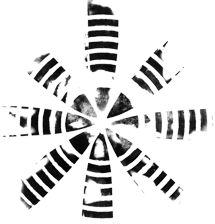Parkinson/Saunders Duo and Apartment House

BMIC Cutting Edge series, The Warehouse, London 6.30 & 8 pm, 12th October 2006
(recorded by BBC R3 for possible future broadcasting)
An interesting far-out evening at the Warehouse, devoted to the talents of performer/composers Tim Parkinson and James Saunders.
The finely-conceived 6.30pm concert featured works by Christian Wolff, Michael Pisaro, Manfred Werder, and Antoine Beuge, finishing off with a performance of Cage's Variations III. Three pieces from Wolff's Prose Collection were surprisingly given tonal structures - Crazy Mad Love featured a toy saxophone in C major, a harmonica with notes E and G, and sung notes B-flat and C, while You Blew it was dominated by sung notes A and D - was this intentional? It certainly gave the music a new twist.
A small audience of about 20 listened very closely to the proceedings, which was a big ask due to the intensely quiet nature of the repertoire. Those who sat with their eyes closed missed out on the enjoyment to be gained from watching the duo working their way through two tables worth of varied objects. In fact, I wonder whether a radio broadcast is really suitable for such a concert, when the experience of the music is surely all about ‘being there' in a particular physical space and as it happens.
Michael Werder's 2005 reminded me of the later version of Cage's 4'33, where the opening and closing of the piano lid signifies ‘movements' in the ambient sound of the concert hall. In this piece, Parkinson and Saunders used bows to produce a variety of timbres from many objects, an old biscuit tin producing a particularly ravishing sound. Ambient noises that drifted into the hall from outside included helicopters, and a surprising level of backstage noise, with an unknown person loudly pacing around. Background noise, so important in the Werder, totally destroyed the last Wolff - Double Song for JRN and CMAW. The performers' noises just weren't as loud as a passing siren.
Antoine Beuger's " / t /" , from etwas (lied), was less appreciated by this listener. The piece is in essence a game of tennis, with the two performers quietly trading enunciations of ‘t' for about 10 minutes, creating the illusion of a leaky tap. In my mind the experience straddled the boundary between concert performance and group meditation.
Michael Pisaro's two pieces, Flux and la voix qui dit, were examples of electro-acoustic music written for acoustic instruments, with very interesting timbres produced by the choice of instruments, which included recorder, white noise and organ.
In Cage's Variations III, Parkinson and Saunders took us on a fascinating sonic journey. Despite the chance element to sound combinations, the duo's choice of instruments and use of speakers playing snippets of various music types - including folk music, and a solo piano version of Misty - was obviously premeditated to create a particular dialogue with Saunders' beloved lo-fi electronics. Did it work? Does it matter whether it did? Personally, I loved the last third of this rendition, which brought about some very interesting and satisfying blending of sounds. (But this is my own agenda brought to the piece.)
Apartment House featured new works by John Lely, Tim Parkinson, Markus Trunk and another version of James Saunder's modular composition, #(unassigned). This embodiment of Apartment House consisted of Anton Lukoszevieze on cello and Andrew Sparling on clarinets, joined by John Lely, Tim Parkinson and James Saunders on auxilary instruments and electronics. The audience by this time had bolstered to over forty.
I was only able to stay for the first half of the later concert, consisting of the Saunders and the Trunk; two very different experiences. The Saunders worked magnificently - cello harmonics and soft clarinet tones creating beautifully translucent counterpoints with the two ring modulators and the treated electric guitar; very satisfying combinations of sounds and timbres, and a sense of journeying - again a successful example of electro-acoustic music written for acoustic instruments. The ending of the piece, as the cello harmonics faded to nothing, was unfortunately ruined by the return of the helicopter.
Trunk's music, scored for three wind instruments, was marred by a coughing fit on stage and also some not entirely accurate playing, which is very noticeable in such a spare texture. The piece has a clear structure, beginning with short, simple, hypnotic unison statements which are then mutated to produce semi-tonal clashes. In the middle of the piece, a metronomic beat enters, which is then mimicked by tone pulsations in the wind instruments - a very successful moment. I would like to hear another performance, and hope that Apartment House may put it on again.
Aleks Szram
The next Cutting Edge concert at The Warehouse, billed as "a celebration concert for those passionate about music", will be given by IXION on Thursday 19 October.
|



